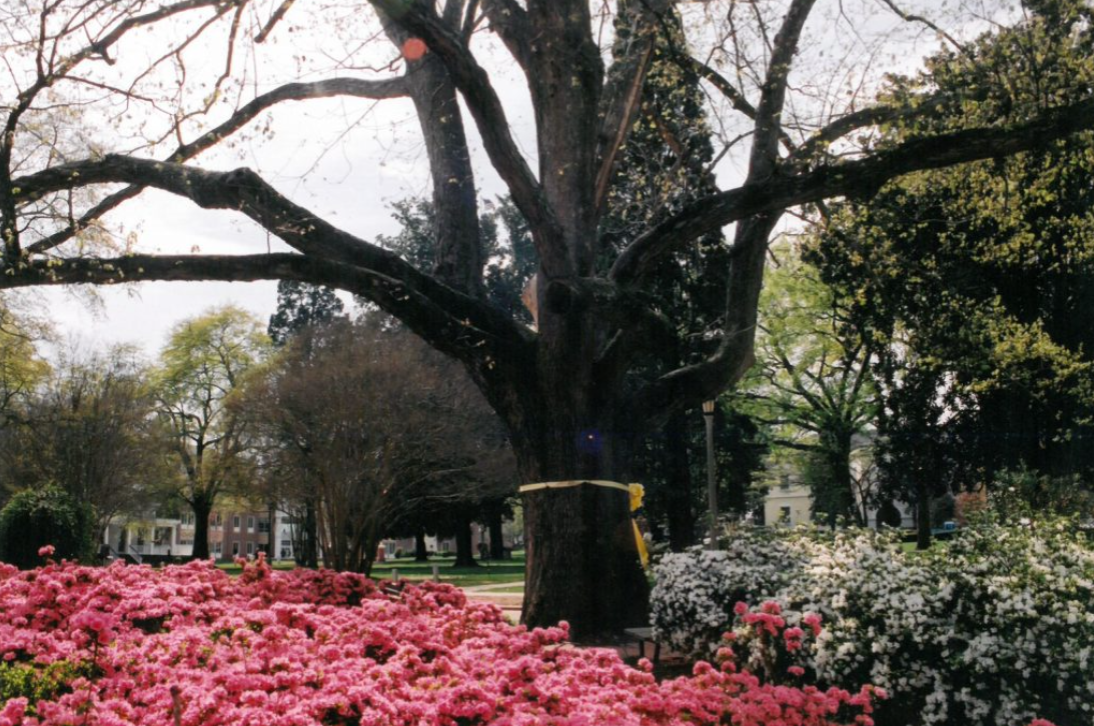Around the turn of the 20th century, a young boy, who was the son of the Augusta Arsenal commandant, found a lovely spot under a giant white oak near his home on the Hill; he would sit under its shade and write poetry.
The young boy was Stephen Vincent Benét, and he would grow up to become one of America’s most beloved poets.
The tree Benét loved to sit under and practice his prose was known as the “Arsenal Oak.”

Benét was fascinated with all things Southern and, in 1925, he penned “The Mountain Whippoorwill: How Hill-Billy Jim Won the Great Fiddler’s Prize: A Poem.”
One excerpt goes as follows:
“Fire on the mountains—
snakes in the grass.
Satan’s here a-billin;—
oh, Lordy, let him pass!”
Members of the Charlie Daniels Band were obviously fans of Benét, as they converted Benét’s tale of a Georgia lad who out-fiddles the devil into the hit song, “The Devil Came Down To Georgia.”
According to Augusta University’s newsletter The Jag Wire, the Arsenal Oak became something of a beloved muse for Benét in his formative years and he spoke often of his love of climbing its sprawling branches and enjoying a cool breeze under its shade.
The tree was already a landmark before Benét was born, in fact the tree was already a mature oak when the Augusta Arsenal was moved brick-by-brick in 1827 to its Summerville location.
The tree was likely a favorite shady lunch spot for soldiers when the Arsenal flag was transferred to the Confederacy in 1861 at the onset of the Civil War. Later, during World War I and World War II, the tree loomed over the armory complex as America armed itself to fight overseas.
In 1957, the tree remained when the Arsenal was converted into performing a peacetime role and became the Junior College of Augusta. For the next half-century, the old 87-foot oak tree was a favorite meet-up spot for students through the years as the college slowly evolved into today’s Augusta University.
The tree was also the preferred setting for students to take senior pictures as well as young couples celebrating their engagements.
During the period when the campus was known as Augusta State University, the Arsenal Oak became the official logo for the school.
The Arsenal Oak was an estimated to be 300 years old, depending on the source, when it was discovered to be suffering from a hypo Xylon canker, a common tree cancer. Desperate efforts were made to save the iconic tree, however, by 2004, the tree had become a safety hazard and was finally cut down.

After the loss of the tree, officials at Augusta University searched for ideas for a new logo for the school and that logo would be found hiding in a dusty storage room: the old Arsenal Bell with the casting date of 1918.
Once the bell was cleaned and restored, the inset wood on the bell’s wooden cap came from the original Arsenal Oak, so the old tree remains a part of the university’s logo today.
The tree was also successfully cloned, and its descendant tree was dedicated in 2016.
For a time, Windsor Jewelers sold high-end pocket knives with inlaid wood from the historic tree; however, no one thought to use the Arsenal Oak wood to make a fiddle.
…And that is something you may not have known.
Scott Hudson is the Senior Investigative Reporter and Editorial Page Editor for The Augusta Press. Reach him at scott@theaugustapress.com










